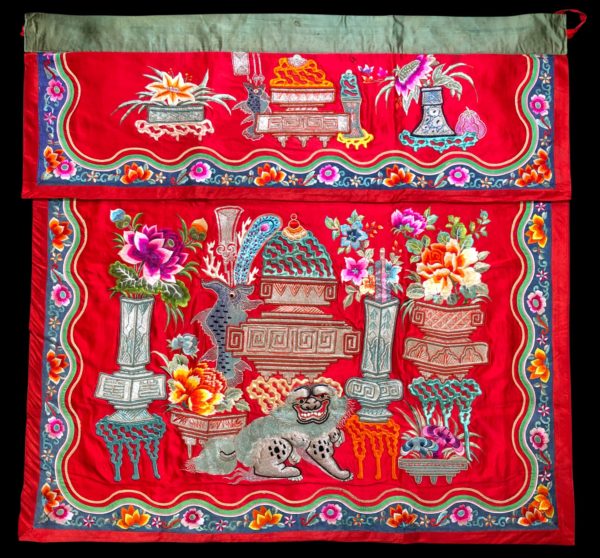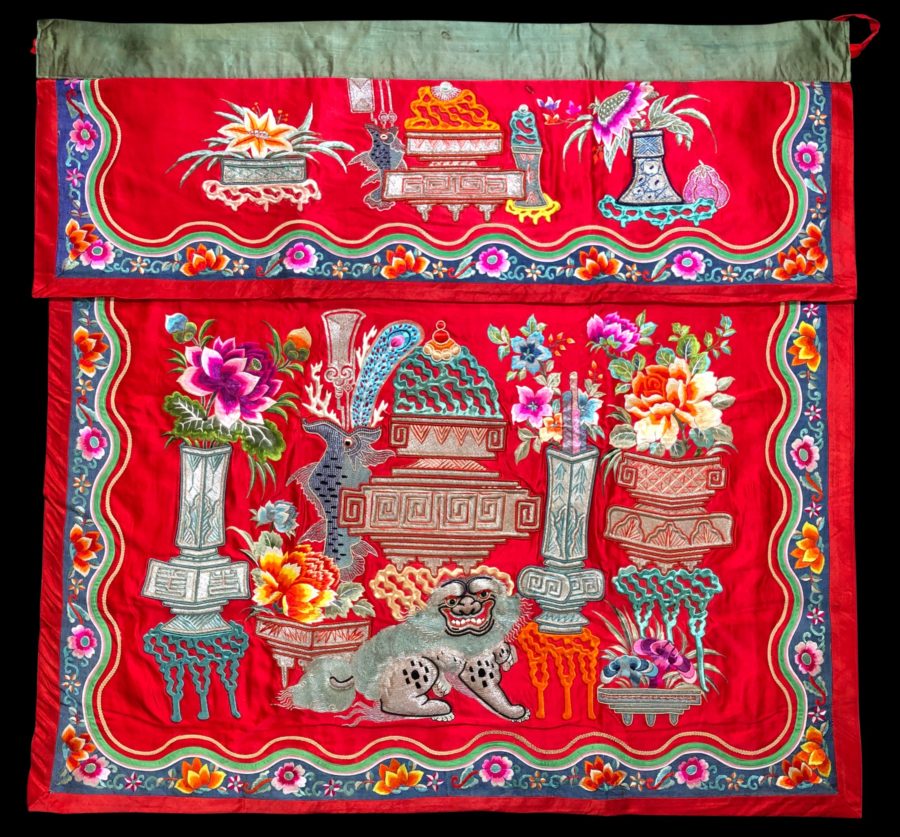This lavish altar cloth or tok wi (literally, ‘altar skirt’) is of red silk (with a red linen backing) that has been elaborately and meticulously embroidered and couched with silk thread and gold-wrapped and other metallic threads. Auspicious Chinese motifs are illustrated with the main components raised, most probably by being stitched over card or some other padding. The effect is to give the cloth a more dynamic, almost three-dimensional appearance. Motifs used include carp, a guardian lion or fo-dog, and overflowing vases, all suggesting plenty, or abundance and prosperity.
The cloth is in typical form in that there is a lower and an upper panel, with the upper panel being stitched to the top and falling down loosely over about a quarter or a third of the lower panel, beneath which the textile is plain. A red cotton textile cord is at each upper end to allow the cloth to be tied to the altar. Altars in Straits and Peranakan Chinese homes typically comprised a long, high altar and before it would sit a front alter to which this cloth would be attached. It, like the front altar, are square.
Such cloths were attached to the front of altar tables in the family home during significant occasions. The red background and the colourful motifs suggests that this altar cloth was used for festive occasions.
These were used by the Straits Chinese of what is now Malaysia and Singapore as well as the Peranakan (localised) Chinese of Sumatra and Java. They were either commissioned locally or commissioned from China.
The cloth is in almost perfect condition. There are no repairs and no loose threads to the embroidery or couching. There is a minor hole to the red silk edging and a minor, barely visible hole to the body of the upper panel. It could be a minor burn from hot, falling incense ash.
NOTE: to see the detail on this cloth keep clicking on the image below until a high resolution version appears.
References
Cheah, H.F, Nyonya Needlework: Embroidery and Beadwork in the Peranakan World, Asian Civilisations Museum, 2017.
Ee, R., et al, Peranakan Museum A-Z Guide, Asian Civilisations Museum, 2008.
Knapp, R.G., Chinese Houses of Southeast Asia: The Eclectic Architecture of Sojourners and Settlers, Tuttle, 2010.
Lee, P. et al, Auspicious Designs: Batik for Peranakan Altars, Asian Civilisations Museum, 2015.



